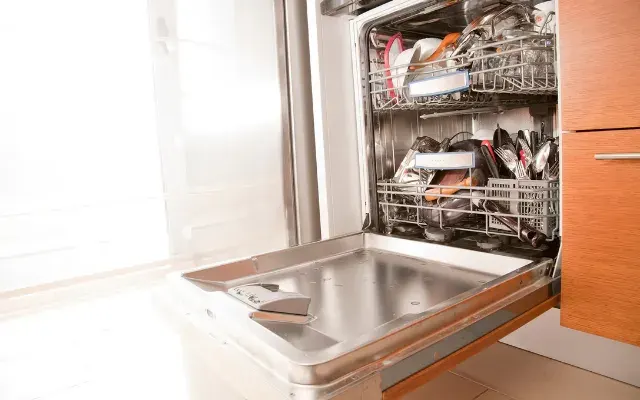
Updating your dishwasher
Published: December 16, 2021
Thinking of updating your dishwasher? There's no question; the choices are endless when it comes to dishwashers. Unless you're using a dishwasher, you could be consuming immeasurable amounts of bacteria. The only way to reliably sanitise your dishes is to use water at temperatures over 62.8 degrees Celsius. Dishwasher companies have poured considerable technology into providing us with the latest in the kitchen appliances.
Good news for small families
Dishwashers have offered separate top and bottom rack cycles for sometime; they're a convenient, energy saving way to speed clean small loads of glassware on the top or cookware, plates and utensils on the bottom, but they had limitations. Now, GE's "Tall Tub" dishwashers makes it possible to clean a complete load in either the upper or lower rack. It even allows options such as a steam prewash and sanitising cycle in a single rack. This new kitchen appliance is especially suited to small families as it eliminates the wait required to accumulate a full load.
Water saving technology
With "ActiveWater", Bosch has invented a new, unique system that uses every drop of water. Allowing for a faster heat up, optimised filter technology, targeted water distribution and improved pump performance, all this adds up to: less water, less energy and higher performance. It also offers the convenience of half loads, stacked anywhere in the dishwasher. The trademarked "AquaSensor" technology measures the amount of soiling at the end of the pre-rinse cycle; if the soiling is only light, the rinse water is reused in the main wash, saving up to 20% of water. If, at the end of the pre-rinse cycle, the water is heavily soiled, the dishwashers will pump it out, thus ensuring the best possible wash.

3D technology
Miele offers the 3D cutlery tray which can be varied in width, depth and height. It can be lowered into the centre, allowing room for larger utensils such as ladles and wooden spoons. LED lights flood the kitchen appliances' interior and the door automatically opens at the end of the program, allowing the load to dry completely. The Miele dishwasher uses as little as 7 litres of water for the Sensor wash program and requires only 0.83kWh of power in the EnergySave program.
Keeping the noise down
One design aspect that continues to be the focus for engineers is the noise level. However, whilst quiet operation is an important feature for any kitchen appliances, engineers need to remember that consumers actually expect some level of noise. "Today, our dishwashers are so silent that you can barely hear them in a normal household environment. People may find this irritating - thinking the machine is defective or inefficient". One design engineer believes that 'the key to quiet design is building dishwashers on a solid foundation that minimizes vibration'.
Asko dishwashers all begin with a solid, one piece, galvanized-steel base pan, the circulation pump is the only component that makes contact with the base pan, thus minimising noise levels. Drain noise associated with the drain pump is also a concern, however, most of the drain noise consumers hear is from the sound of water entering the home plumbing. The only way to reduce the sound of water flowing through the home plumbing would be to reduce the rate of flow, but this isn't a recommended option.
Extra spray arm
Smeg offers the extra spray arm, their "orbital system" features two spray arms that operate simultaneously in opposite directions to ensure the water is evenly distributed throughout the inner cavity for a perfect wash. An additional spray arm, located in the upper part of the dishwasher, optimises the supply of water by distributing it more evenly throughout the machine.

Some things to think about when updating your dishwasher.
Take your time, shop around, have a clear idea on the requirements of your family and the features that you consider important or just optional.
Ensure your new dishwasher blends seamlessly with your new kitchen by choosing the right kitchen cabinetry to match.
Looking For A New Kitchen?
Our team can help. Simply request a quote and we'll guide you through the rest.